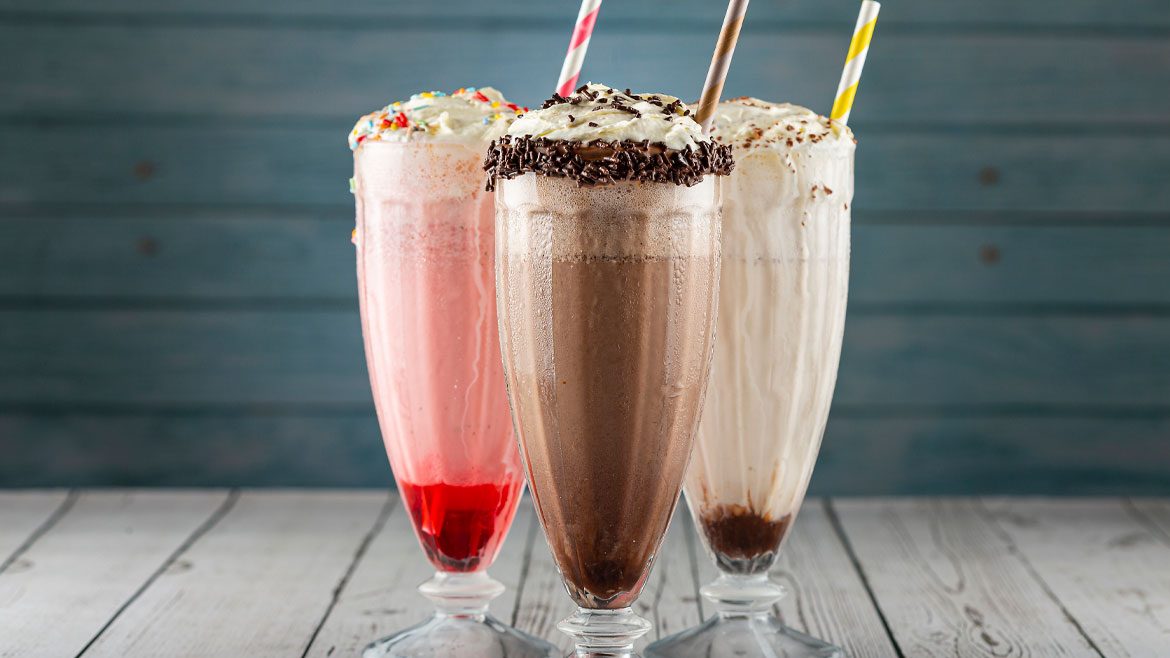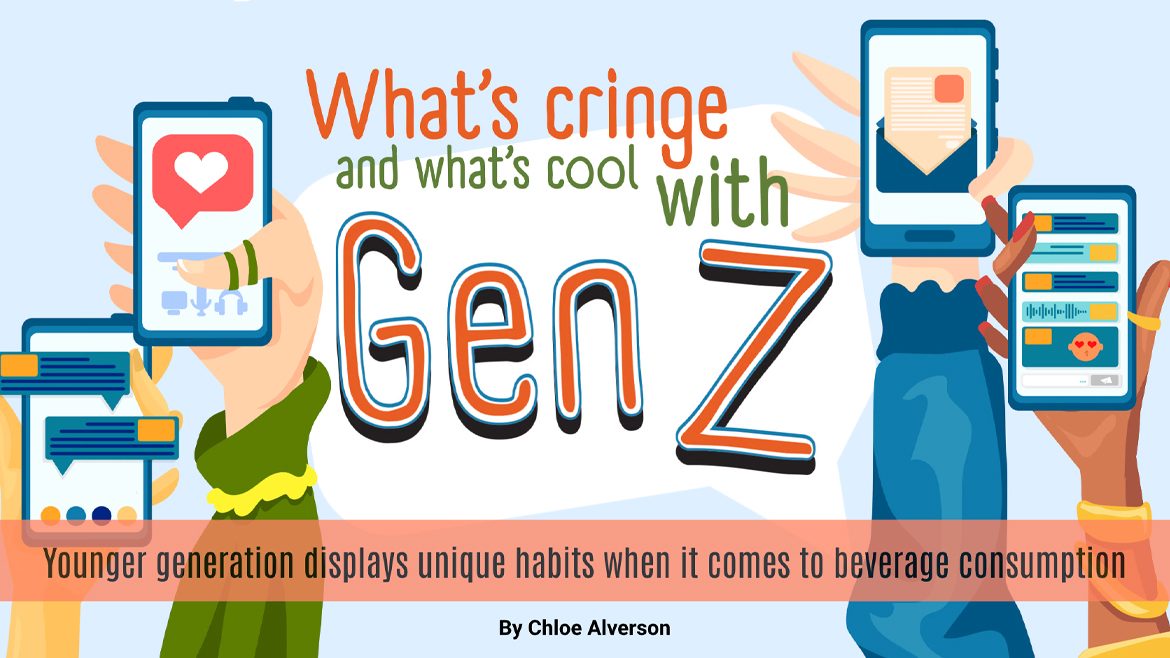Special Report: Health & Wellness

In early 2010, 28.7 percent of U.S. adults aged 20 and older were obese, according to a report from the Center for Disease Control and Prevention (CDC), Atlanta. This is a slight increase from the 2009 estimate of 28 percent, states the September 2010 early release of estimates based on data from the January to March 2010 National Health Interview Survey report.
Obesity, which is defined as a body mass index of 30 or more, has increased over the years in this age group that had a prevalence of 19.4 percent in 1997, according to the report, which has a 95 percent confidence interval.
When it comes to addressing the concern about the prevalence of obesity, beverages are not immune from discussion.
“That’s really pretty significant for the beverage industry because it has to do with all the full calorie sodas, and certainly all the juices and juice drinks that are full calorie as opposed to reduced calorie,” says Lynn Dornblaser, director of consumer product goods (CPG) insight for Mintel International, Chicago. “One of the things that we’re seeing a bit more talked about and bit more attention being put toward discussion is not so much fat or some of those issues, but talking specifically about calories.”
Although full-calorie beverages can be targeted when consumers are looking to balance calories in and calories out, Dornblaser notes that beverage companies still can be a part of consumers’ regular consumption.
“I think the beverage industry sits right square in the middle of the discussion about obesity, and to that end I think it really is important for companies to think about what their messages are so it’s not about not having full-calorie products, but it’s about making sure that you’ve got very clear messaging to consumers,” she says.
Dornblaser suggests companies can communicate with consumers by addressing the positives of their products, such as explaining how much vitamin C is in each serving of orange juice. Full-calorie products also can offer different package size options, which allow consumers to consume the full-calorie product they enjoy, but without adding the calories from the traditional serving size, Dornblaser explains.
The Coca-Cola Co., Atlanta, used this strategy when it released its 90-calorie Mini Can last year. Coca-Cola’s 7.5-ounce Mini options launched in eight-packs in multiple varieties including Coca-Cola. The company introduced the calorie-controlled cans as a way to remind people about the importance of moderation and calorie management, Coca-Cola said, in a statement.
“Thinking about obesity, in general when it comes to beverages, it’s about really helping consumers make the choices that they need to make,” Dornblaser says. “And giving them options so they can make choices that might be better for them.”
Making reductions
To meet with consumer preferences, beverage companies can explore the reduction or elimination of ingredients that can be negatively viewed by some. However, when it comes to making reductions in ingredients that consumers associate with obesity, not overly communicating is sometimes an option to consider, Dornblaser says.
According to Mintel’s 2011 CPG Trends report, 42 percent of U.S. consumers believe that high fructose corn syrup in beverages promotes obesity. The report suggests that although a portion of consumers believe this about high fructose corn syrup, a quiet reduction might be a better way for beverage companies that decide to reduce or eliminate its use.
“If you have two products sitting on the shelf by the same company and one says ‘No high fructose corn syrup,’ that automatically raises the question in consumers’ heads about what’s in the other product,” Dornblaser says. “With high fructose corn syrup having a negative connotation with so many consumers, that might not be the wisest direction to go for companies because it does too much to spotlight a potential negative: ‘We took out of this one, but we didn’t take it out of that one.’ So what you’re seeing instead is companies reduce or eliminate and not really talking about it.”
She adds that consumers who are concerned about the use of high fructose corn syrup are more likely to read the back of packaging and ingredient statement than what is on the front of the package for information.
However, keeping quiet about sodium reduction can be another story. Products, might not share when sodium levels have been reduced because consumers balk at compromised taste, according to the 2011 CPG Trends report. For companies that want to reduce sodium levels in tomato juice-based beverages, they can make the change a gradual progression to help address the new taste, Dornblaser says.
“We see companies stepping down levels of sodium,” she adds. “So instead of going from whatever amount they have to the ideal amount of sodium that they want to get to - which can be kind of a big reduction - they’re doing smaller reductions and then doing successive ones. So they’ll bring down the sodium for a little bit and wait, and then do it again, and then wait. That helps get consumers used to any difference in taste or it really doesn’t have a strong impact on consumers when you reduce sodium just a little bit.”
Not all reductions need to be kept quiet. Dornblaser suggests that removing added sugar from beverages is often a positive marketing message.
“There isn’t a huge negative in beverages to talk about reducing sugar,” she says.
PepsiCo, which is a member of the Healthy Weight Commitment Foundation, has committed to achieving nutrition goals, including reduction in added sugars across its portfolio, the company says.
“We’re pleased with the progress we’ve already started to make through recent product launches, we have a very strong innovation pipeline and we’re excited about the future,” says a PepsiCo spokesperson.
Tropicana, a subsidiary of PepsiCo, produces its Trop50 fruit juice beverages that are sweetened with PureVia, an all-natural extract of the stevia plant. The brand added the Farmstand Apple variety to its product offerings last year. The new flavor is made with 50 percent less sugar and calories, the company says.
“The taste of Trop50 Farmstand Apple doesn’t fall far from the apple tree,” said Memo Maquivar, vice president of marketing for Tropicana, in a statement when the product launched in August 2010. “It delivers the delicious taste of orchard-ripened apples that consumers crave with less sugar and calories than apple juice, to help you look and feel good without sacrificing enjoyment.”
An 8-ounce serving of Trop50 Farmstand Apple contains 50 calories, a full day’s supply of vitamin C, and is a source of vitamin E, the company says.
PepsiCo, Purchase, N.Y., also made strides in reducing calories in other products, including Gatorade. The sports drink brand developed G2, a sports drink with the same amount of electrolytes as the original Gatorade, but with 50 percent fewer calories and added vitamins B, C and E, it says. The company also announced a lower calorie G Series Fit line to be launched this year.
Innova Market Insights states in a report on beverage buzzwords that more than one-fifth of drink launches in 2010 were positioned as either low-calorie or sugar-free/reduced-sugar/no-added sugar or both. The report also spotlights “health,” “naturalness,” and “energy” as popular beverage claims.
Researching the benefits
Although consumers are looking to cut calories when working against obesity, some research studies suggest that beverages actually can help achieve healthier diets.
The Dairy Research Institute released its “Top 2010 Dairy Research Insights, Look Ahead to 2011” review. The report says that as concerns increase about obesity so do concerns about obesity-related diseases, such as Type 2 diabetes and heart disease.
One of the review insights about dairy nutrition and product research addresses a Dairy Research Institute administered study that states that adequate dairy intake can improve key metabolic risk factors associated with obesity. One referenced study suggests that dairy lowered blood insulin levels and increased insulin sensitivity, according to lead author Dr. Michael Zemel, which demonstrates potential decrease for developing metabolic syndrome and Type 2 diabetes.
However, dairy drinks are not immune to health concerns in relation to beverage consumption. Mintel’s “Dairy Drinks” insight that was released in November states that “in an era of high obesity rates some consumers remain concerned about high fat and sugar content in some milky products. To counter this, there is an established low fat segment, especially in white milk.”
Last year, Glendale, Calif.-based Nestlé added to its portfolio with its launch of Nestlé Nesquik Banana Strawberry, which is made with low-fat milk. Banana Strawberry is fortified with calcium, vitamins A and D and contains 8 grams of protein in each serving.
Mintel’s reports states that in the six-month review period, 28 percent of dairy drink products boasted low/no/reduced fat claims, which actually is a 1 percent decrease compared to the previous period.
The research firm also suggests that adding to beverages is a trend companies are executing through fortification with vitamins and other nutrients. Vitamin/mineral fortified products accounted for 16 percent of launches this review period, Mintel’s “Dairy Drinks” reports.
One such fortified product is the line of Organic Green Kefirs with Phytoboost, a blend of phytonutrients, introduced by Lifeway Foods, Morton Grove, Ill. In addition to probiotic cultures, the kefir includes ingredients from 10 green vegetables and green tea. Organic Green Kefir is available in Kiwi Passion Fruit and Pomegranate Acai Blueberry. Each bottle contains 80 mg. of plant-based polyphenols.
Not so natural link
Mintel’s 2011 CPG Trends report predicts that redefining the word “natural” will be a topic that beverage companies will need to address this year.
“When it comes to the idea of redefining ‘natural’ it’s about, in the biggest sense, moving away from talking using that blanket statement ‘all-natural’ because that’s something that’s beginning to be legislated against in the European Union, and we think that similar legislation will eventually come here,” Dornblaser says.
Although consumers’ preference for natural products varies in reasoning, Dornblaser says that associating natural with a way to curb obesity is not a direct correlation.
“[It] seems to me there are a bit of consumers [who] don’t quite understand that just because something is ‘natural’ or ‘organic’ that that has nothing to do with calories consumed or weight management,” she says. “There’s no connection. Does it have to do with ‘good to the environment?’ Probably, yes. But that something is ‘natural’ has nothing to do with anything regarding weight management or obesity.”
When beverage companies are looking at how to position natural products, Dornblaser thinks that linking natural formulations with the issue of eating and drinking more fruits and vegetables might be a message that links up. She highlights Camden, N.J.-based The Campbell Soup Co. as a good example.
“Companies like Campbell’s soup with V-8 have addressed that in a really good way in talking about the goodness of V-8 and the relatively low calories and the nutrition that it gives you,” she says. BI
Looking for a reprint of this article?
From high-res PDFs to custom plaques, order your copy today!




